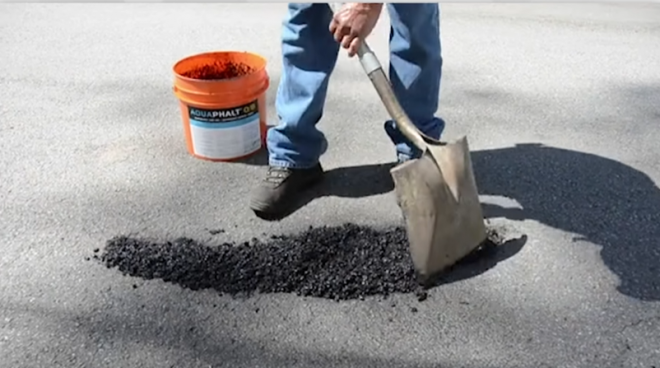After the winter, it’s time to repair cracks and minor potholes that have appeared on roads and parking lots. That way, damage doesn’t get bigger or become a problem for the general public. If you recognize damage quickly, it can still be repaired easily and inexpensively.
We explain which products are best for joint and pavement repair.
Type of pavement
The type of pavement essentially determines the material used for pavement repair. Here are products for concrete repair and asphalt repair.
Concrete: Industrial pavements are mostly made of concrete. Easy-to-use epoxy mortars are used, which ensure durable and robust repair of the pavement in the warehouse or manufacturing.
Asphalt: Mostly outdoor surfaces are asphalted. Pavements with holes or cracks can be repaired with asphalt repair:
- Potholes are repaired with cold asphalt.
- Smaller cracks are closed again with crack filler
When inspecting, you should pay attention to the depth and extent. Is it a small crack or a deep hole? This will allow you to easily determine later which product is suitable for you. In this context, the type of pavement (concrete or asphalt) also plays a role.
Timely pavement repair prevents major damage and minimizes the risk of accidents indoors and outdoors. The first step is to locate the damage precisely and determine the extent of the damage.
- Concrete: flowable mortar for interior and exterior use
- Asphalt: two-component repair based on quartz sand
Products for repairing damage or leveling uneven surfaces have different degrees of hardening. There is cold asphalt that can be loaded almost immediately or epoxy resin mortar for concrete repair that is already cured after 3 to 6 hours.
What to do in case of cracks?
Taking care of minor cracks quickly prevents costly repairs. Hairline cracks stress the asphalt and allow moisture to penetrate deeper. Larger cracks caused by frost are a known nuisance and increase the risk of accidents. Cracks can be easily repaired with something called Overbanding – a pavement repair film made of thermoplastic. Water penetration into asphalt cracks is effectively prevented in this way.
For the asphalt
Cold patch asphalt is an effective alternative for larger damages like potholes. Here, a composite material of cement and bitumen is applied. This is done up to an application thickness of 10 to 200 mm (per layer). This can also be done in rainy and wet conditions. The repaired area is immediately loadable, the material is oil-resistant and can also be used for indoor applications (odorless).
For the concrete floor
For concrete floors exposed to extreme loads (industrial use), we recommend epoxy resin mortar. These are plastic-modified mortars. Epoxy resin mortars have elastic properties and harden very hard. Depending on the ambient temperature and application thickness, curing takes place within 3 to 8 hours. Plastic-modified repair mortar is suitable for forklift trucks and, in addition to concrete floors, can also be used for repairing steps and edges. A distinction is made here between epoxy resin mortar for concrete expansion joints and for concrete floor repair.
A compound material made of cement and quartz sand proves to be a downright universal repair agent for ramps, roads, curbs, manholes, etc. Easy to apply, just by adding water, the repair mortar hardens after only 4 hours and can be driven on. Resistance to impact, abrasion, water, and oil characterize it.

